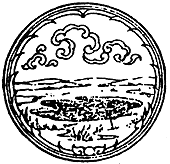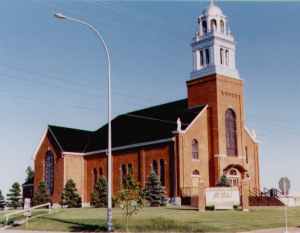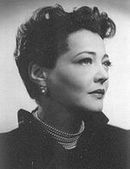Moseley Rugby Club was formed in 1873 and is based at
Billesley Common in
Birmingham,
England. The club originally played at the
Reddings, but after attempting to keep up with the transition to professional rugby, the club ran into financial difficulties and was forced to sell their prestigious 125 year home to property developers.
History Origins In 1873, Moseley was founded, born out of some members
Havelock Cricket Club who wanted a winter sport when the cricket season had finished. The club debuted its signature red and black colours one year later. The Reddings was occupied by the club in 1880, and it stayed that way for almost 130 years. The club was traditionally called, like many rugby football clubs from either code, simply "Moseley Football Club" (a signpost from Alcester Road along Reddings Road in
Moseley, erected by
Birmingham City Council, pointed to "Moseley F.C. (R.U.)" This was removed after the club moved grounds.) There were major successes at The Reddings, including becoming the first team to defeat the travelling Maoris, in 1888, and the club acquired the freehold of the land in 1925. In 1935 the ground even staged an England trial game.
Early Days Floodlights were installed at The Reddings in the late 1960's, and from this time onwards Moseley's fixture list routinely included the top sides in England and Wales. The most successful years were the late 1960's and 1970's, this included reaching the
RFU Knock-out cup final on three occasions - losing 17-6 to
Gloucester and then 15-12 to
Leicester before emerging joint winners after drawing 12-12 with Gloucester after extra time in 1982. The team also defeated
Fiji and the
Barbarians and the club won the Anglo-Welsh Trophy twice - in 1972-1973 and 1976-1977.
When league rugby commenced, the team was placed in the
Courage National Division 1, the top division at the time. They ended
Bath's astonishing run of 22 unbeaten cup matches in 1988 winning 4-3.
The Golden Years The Professional Era The team's relegation from the top division at the end of the 1990-1991 season marked a consolidation period for the club after their fantastic times of the 1970's. In August 1995, when the door to full-scale professionalism opened, the board executives came together to work on plans to move with the idea and find possible financial resources so that the team could play with the best team and best facilities.
Building for the Future On 30th January 1998, the club went into Administration, after overstretching its financial resources in the unreal world of professional rugby union. The Reddings had been sold on a 'delayed sale' basis to Bryant Homes and the future of the club was in jeopardy. However, the club's playing commitments were still fulfilled except in the North Midlands Cup in which the 2nd XV was entered. On 12th June 1998, the club was given another chance to fashion its own destiny when a group of Moseley Rugby Club members, assembled by Simon Cooper, a former club player and official, formed Moseley Ventures Ltd. and bought the club out of Administration. In the last 1st XV match at The Reddings on 6 May 2000, Moseley defeated
Worcester 34-17 in a National Division One game.
Administration - Leaving the Reddings On 7 October Moseley defeated Exeter 27-18 in the first match at its new home at the
University of Birmingham in Bournbrook. The club stayed there until the end of the 2004/05 season.
Long-term permissions for a clubhouse and hospitality boxes was not granted and in consequence Moseley Ventures found it more difficult than expected to raise the necessary finance. Merger plans were discussed and an offer was made by Firoz Kassam, the chairman of
Oxford United Football Club with a proposal to buy out the club and take it to his new stadium in Oxford. Supporters organized a major media and political campaign and this became the catalyst for a consortium of Moseley stalwarts to come forward to raise finance to defeat the Kassam offer. At a predictably traumatic meeting at the Grand Hotel on 26 July 2002, the consortium gained the support of the creditors by a narrow 1.7% majority regarded by some as a Pyrrhic victory. However, the consortium's business plan was approved by the RFU and with additional backing by the politicians of the City of Birmingham and the North Midlands RFU, the club survived in Birmingham. So a new Moseley Rugby Club was born and appointed David Warren as Chief Executive and former players John Beale and Derek Nutt as Director of Rugby and Head Coach respectively.
The Bournbrook Era - Crisis and Final Rescue Recent Seasons Despite the success of the consortium in keeping the club in Birmingham, a large number of first-team regulars had left the club at the end of the 2001/02 season. The team hastily assembled from more junior ranks after the rescue was inevitably relegated from National Division One (after 14 seasons in the top two divisions).
2002/2003 season Negotiations for planning permission for a new stadium at Billesley Common, in the same postal district as The Reddings, began and permission was obtained. On the playing front, after a difficult first half to the season, the team began to gel, and a strong run of results in the new year saw mid-table respectability achieved, forming a basis for future improvement.
2003/2004 season In 2004/2005 Moseley finished third in
National Division Two, narrowly missing promotion behind
Doncaster and
Newbury. Nonetheless, the season saw many club records broken, and the era of lodging at Birmingham University ended with much optimism for the future.
The records broken were:
Most team points: 665 points
Most Consecutive Victories: 6
Most individual points in a season: 328 (Ollie Thomas)
Most conversions in a season: 48 (Ollie Thomas)
Most penalties in a season: 62 (Ollie Thomas)
Most drop goals in a season: 7 (Ollie Thomas)
Most consecutive scoring matches (points): 15 (Ollie Thomas)
Most league appearances: 161 (Andy Binns)
Most penalties in a career: 62 (Ollie Thomas)
Most consecutive matches: 70 (and counting - Gareth Taylor)
2004/2005 season The first season at the new stadium on Billesley Common saw Moseley installed as favourites to gain promotion to higher echelons of the English game. Coaches Ian Smith and Don Caskie, along with Director of Rugby John Beale assembled an exceptionally strong team, now including ex-Premiership players
Neil Mason and
Daren O'Leary. Moseley topped the
table for much of the season and indeed finished as champions ahead of
Waterloo. Both teams gained promotion to
National Division One 2005/2006 season After the euphoria of promotion, the new season was predictably much more difficult for fans and players alike. Most of the promotion-winning squad was retained, with some judicious additions, and early games showed promise, including a defeat of highly-fancied
Bedford. However, a string of defeats up to Christmas against top teams, with even bonus points being hard to come by, left Moseley facing a difficult task to survive. A brief rally in December and January, including a win against traditional "best enemies"
Coventry proved vital in the long run, and towards the end of the season, with
Waterloo already doomed,
Otley flagged badly enough for Moseley to overhaul them and win a deserved second season in National One.
2007/2008 season Moseley play at
Billesley Common, on a section of the common leased from
Birmingham City Council. The facilities include (temporary) clubhouse, covered stand (from September 2007), changing facilities, club shop, hospitality boxes and educational facility. The first XV pitch is extremely highly-rated for its playing surface. There are also pitches for 2nd/development XV, colts, women, minis and juniors, and an all-weather pitch featuring the latest rubber-crumb technology.
Stadium Plans have been drawn up for the replacement of the temporary facilities by permanent buildings within the limits of the existing stadium. These were exhibited to the general public in July 2007, and will enable the club to expand its visitor capacity and improve hospitality facilities.
Development? National Division Two Champions 2005/06
John Player Cup / Pilkington Cup Winners 1982 (shared with Gloucester); Runners-up 1972, 1979; Semi-final 1981, 1988, 1990; Quarter-final 1975, 1977, 1987, 1991, 1993, 1994
Anglo-Welsh Trophy Winners 1972-73, 1976-77
Club honours Moseley field a full range of teams from the professional level of the 1st XV through all age groups. These are as follows:
1st XV - Professional team, competing in National Division 1, the second tier of the RFU league "pyramid".
"A" Team - 2nd XV, run jointly with Gloucester Rugby, playing in the Guinness "A" League.
Development XV - Overlaps with "A" team, providing opportunities for younger players in challenging fixtures
Women's XV - Plays in National Challenge 2 Midlands West league.
Selly Oak RUFC - Amateur XV affiliated to Moseley, also playing at Billesley Common, in Midlands Div 4 West (North).
Colts - U19 and U17 age groups, competing in National and County competitions.
Juniors - U16, U15, U14 and U13 age group teams, playing friendly games against other local clubs .
Minis - U7 to U12, and Micros for the very youngest. All except micros play friendly matches against other local clubs. Girls and boys play in the same teams up to U12.
Teams This list includes players on loan as well as permanent squad members. After 13 years of service to the club Andy Binns has been awarded a Benefit Season. Please help create a Wikipedia site to recognise this unique achievement. The benefit season will be launched on Saturday 20th November when Moseley play Doncaster in National League One.
http://en.wikipedia.org/wiki/User:Andybinnsbenefitseason * England Academy - dual-registered with Gloucester § On loan  Notable former players
Notable former players



 Symbols
Symbols


 Colonial and similar roles
Colonial and similar roles Notable former players
Notable former players


 Demographics
Demographics
 Notes
Notes Development
Development Biography
Biography Career
Career History
History
